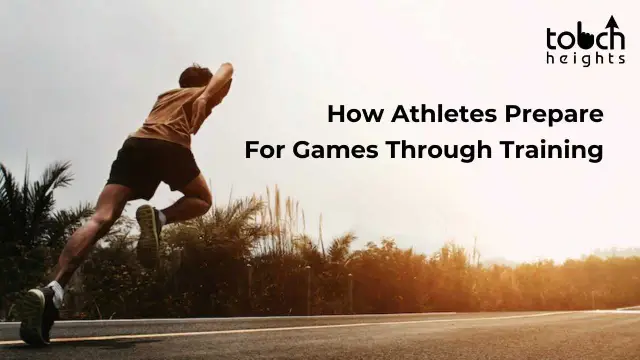Athletes must prepare their bodies for competition before participating. While there are several ways to prepare athletes for a game, high-intensity interval training (HIIT) is the most effective strategy to mimic the demands of a game.
Warm-ups on the field should last between 25 and 30 minutes. An athlete’s chances of success will enhance if they carry out these workouts correctly.
High-intensity interval training replicates the demands of a match while mental reinforcement tactics should be employed to get players ready for games.
Pre-season training improves athletes’ performance.
Athletes put in a lot of work over the offseason to become in shape for the physical rigors of competition.
The program is run by sports scientists and strength and conditioning trainers. Pre-season conditioning’s primary objectives are to improve an athlete’s skill level and prevent injuries.
Athletes are more likely to sustain injuries during contests if their fitness is poor. Warm-ups, technical instruction, and physical activities are all included in a successful preseason program.
Pre-season training is essential for improving fitness levels and preventing injuries throughout the soccer season. This kind of conditioning emphasizes endurance and power, two aspects of aerobic fitness.
Sportspeople use mental preparation tactics to get ready for competition.
To be ready for games and contests, athletes frequently employ mental reinforcement tactics. Athletes use this opportunity to compliment themselves on their performance.
Another name for this is coaching reinforcement. Focusing on the precise activities that athletes should take is part of this strategy.
For instance, if a player is practicing a jump shot, input on arm extension and follow-through is necessary. Athletes need to be placed further out from the basket for this to be effective.
These strategies, which include both positive and negative feedback, are employed by coaches to inspire their players. With the help of this strategy, athletes will be in a position to respond to their training in the best possible way.
Athletes might have fewer anxiety thanks to this kind of training, which stresses the elements of mental skill development. This method can therefore raise an athlete’s degree of satisfaction.
The difficulties of high-intensity interval training are mimicked.
High-intensity interval training (HIIT) is a fantastic training technique for football players to use for off-season fitness and injury rehabilitation.
Demands are appropriately matched by the program’s dual emphasis on aerobic and anaerobic energy sources. Football needs brief bursts of intense exertion interspersed with relaxation intervals.
Athletes may choose from several sprint lengths, sprint speeds, and active recovery times with HIIT.
Warm-up on the field should last 25 to 30 minutes.
To prepare for a game, pitchers must warm up. Although they are not practiced, warm-ups can help a pitcher’s motion.
The warm-objectives up’s are to raise body temperature, stretch various body parts, and concentrate the mind.
Warming up before pitching is especially important for pitchers because they need to feel prepared to throw the first pitch and face the first batter.
Depending on the physiological and physical demands of the competition, the length of an on-pitch warm-up should change.
Before games, a decent warm-up lasts for around 25 to 30 minutes. A quality warm-up routine will prevent injuries while getting the pitchers ready for a match.
Increasing athletes’ glycogen storage when carbo-loading
An athlete may make sure that their muscles have the most glycogen before a competition or event by carbo-loading them before a game.
This technique can add between 10% and 15% more muscle glycogen to an athlete’s muscles while lowering the possibility of running out of fuel.
Athletes should start carbo-loading three to seven days ahead of the competition, according to Trent Stellingwerff, director of performance solutions at the Canadian Sport Institute Pacific.
Although the technique has been around for a long time, it was not until the late 1960s, when Swedish physiologist Gunvar Ahlborg released research on the topic, that it was institutionalized.
His research showed a significant connection between athletic performance and glycogen levels. Before a game, athletes who carbo-loaded had more muscle glycogen available for storage than those who followed a low-carb diet.
Sleeping during a game
There is not much scientific proof to back up the claim that getting some sleep before a soccer game can help you prepare.
However, many athletes claim that sleep deprivation is a serious issue and that competing at night drastically cuts down on sleep time.
Some athletes claim to use hypnotic drugs, tranquilizers, technology, and other relaxation techniques to get some rest before the game.
A night match is said to have slept before by almost 95% of players, some taking lengthy naps and others brief ones.
Different athletes prepare for a game in different ways. Some people use mental imagery to get ready, while others talk about the game and picture themselves performing well.
Conclusion:
To give themselves the greatest chance of doing effectively on match day, players at all levels of the game spend endless hours practicing and perfecting their methods. However, optimizing performance for the match involves more than just increasing technical competence.
In the days before the game, being “prepared” should take many different forms and cover a wide range of topics. Your whole effectiveness on the field might be severely hampered if you leave one aspect up to chance.







